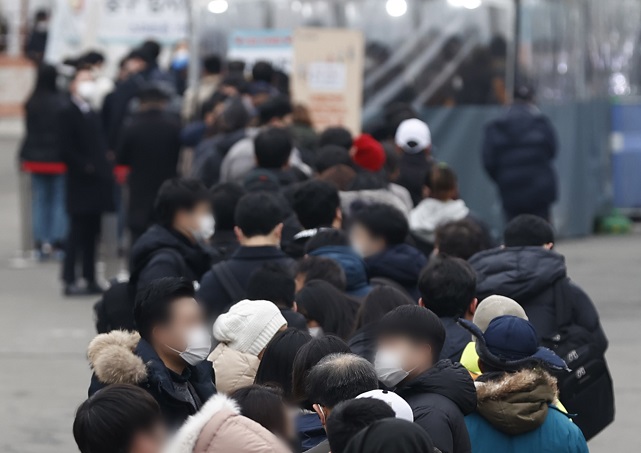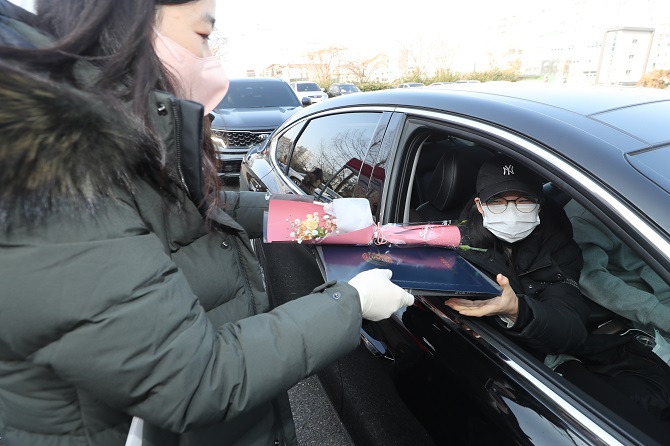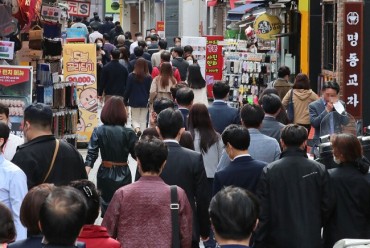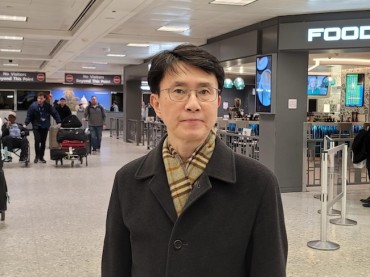
In this file photo, people stand in line to take coronavirus tests at a screening clinic in front of Seoul Station on Dec. 24, 2021. South Korea’s new coronavirus cases fell below 7,000 for the second day in a row on the back of antivirus restrictions, but critical cases surged to a record high of 1,084. (Yonhap)
SEOUL, Jan. 4 (Korea Bizwire) — South Korea’s daily coronavirus cases stayed below 4,000 for the third straight day Tuesday amid tightened social distancing rules, but health authorities are on high alert after the first omicron-linked deaths were reported a day earlier.
The country added 3,024 new COVID-19 infections, including 2,889 local infections, raising the total caseload to 645,226, according to the Korea Disease Control and Prevention Agency (KDCA).
The figure was down 105 from a day earlier and down 841 compared with the same day last week. This also marked the third straight day that the daily cases have fallen below 4,000, following 3,832 and 3,126 reported Sunday and Monday, respectively.
South Korea reported 51 more COVID-19 deaths, raising the death toll to 5,781, the KDCA said. The number was smaller than the previous day’s 36 deaths. The fatality rate stood at 0.9 percent.
The number of critically ill COVID-19 patients came to 973, down 42 from a day earlier. Critical cases fell below 1,000 for the first time in 15 days.
As of 9 p.m., South Korea had reported 3,689 additional cases, up 930 from the same time a day earlier and down 1,082 from the same time a week ago.
Since daily cases are tallied through midnight, the figure announced the following morning is likely to be in the 4,000s. Of the new cases tallied at 9 p.m., 70 percent came from the capital area.
Daily cases are showing signs of slowing recently as the government maintains tough antivirus curbs.
In early November, the government eased long-enforced pandemic-era restrictions as part of efforts to return to normalcy in phases under the “living with COVID-19″ scheme.
The daily cases, however, soared to a record high of 7,848 on Dec. 15, prompting the government to reimpose antivirus regulations days later for two weeks, which were supposed to end Sunday.

A teacher hands over a graduation certification to her student at a middle school in Gwangju, 330 kilometers south of Seoul, on Jan. 4, 2022, as a graduation ceremony there took place in a drive- and walk-through format amid the pandemic. (Yonhap)
The government extended the enforcement of those rules for an additional two weeks through Jan. 16, which include a four-person cap on private gatherings across the nation and a 9 p.m. business hour curfew on cafes and restaurants.
Health authorities are still on high alert, as the country reported its first omicron-linked death cases.
Two coronavirus patients in their 90s were reported to have died in Gwangju, 330 km south of Seoul, with one of them posthumously confirmed to have been infected with omicron and the other suspected to have been infected with the potentially more transmissible COVID-19 variant.
They were the first omicron-linked deaths in South Korea since the variant was first reported on Dec. 1 in the country.
Meanwhile, Seoul reported 903 out of the 2,993 locally transmitted COVID-19 cases, while 916 came from the surrounding Gyeonggi Province and 162 from Incheon, a port city west of Seoul.
The number of cases from overseas came to 135, raising the total to 17,866.
A total of 42.6 million people, or 83.1 percent of the country’s 52 million population, have been fully vaccinated, and about 19 million, or 37 percent, have received booster shots, the KDCA said.
(Yonhap)






